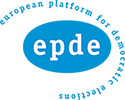Why is higher education inaccessible to the majority of people with disabilities?
https://spring96.org/en/news/69291
2014
2014-02-21T11:46:37+0300
2014-02-21T11:46:37+0300
2014-02-21T11:46:37+0300
en
Only 10 percent of people with disabilities in Belarus have higher education. What is preventing these people from getting higher education and how to overcome these barriers?
– Today disability all over the world is understood as the problem of interaction of a person and the environment. The best way to avoid exclusion from the society is to get higher education, – says Sergey Drozdovskiy, the coordinator of the Office for the rights of persons with disabilities. But higher education in our country is almost inaccessible for persons with disabilities. As on November 2013 about 10 percent out of 532 thousand persons with disabilities in Belarus got higher education. Among them 6 percent of wheelchair-bound adults, 10.7% with vision impairments, 6.3% with hearing impairments.
Barriers: objective and subjective.
There are some barriers preventing people with disabilities from interaction with the environment. In 2001 WHO adopted the International Classification of Functioning, Disability and Health – document giving examples of all the types and forms of barriers which can prevent a person from inclusion to the society, including to the process of education. We will mention the main types:
-Inadequate political measures
-Negative attitude of the society
-Lack of financing
-Inaccessibility of physical environment
-Inadequate information and communication
-lack of consultations and inclusion in the society
-lack of data and experience
Accessibility in first place
Sergey Drozdovskiy asserts that without systematic change and development of higher education it is useless to wait for any changes.
–In most cases people try to solve the problem of inaccessibility of higher education for persons with disabilities by constructing ramps and special elevators in buildings for persons in wheelchairs and hiring interpreters for persons with hearing impairments. Barrier-free environment is not the main problem for disabled on the way to getting higher education. It would be much better to be guided by the “Accessibility” principle. – says Drozdovskiy.
This principle consists in the elimination of barriers which prevent persons with disabilities from exercising their rights.
Specialists of the Office for the rights of persons with disabilities offered to accept the guiding principles of accessible education – vectors, which allow setting the minimal norms, promoting the provision of accessibility for everyone in spite of disability.
Experts say that there are educational establishments in Belarus where necessary conditions for students with different forms of disability have been created. For example State institute of management and social technologies of BSU. Unique specialists who are able to find an approach to each student work here and it can compensate other shortcomings of this educational establishment.
Is there any decision?
During the conference “Modernization of education: challenges and perspectives” which took place in Minsk recently, specialists discussed the possibilities of the improvement of domestic education. Experts have created a collective project of proposals to the new Education Code.
Specialists of the Office for the rights of persons with disabilities earlier prepared concrete recommendations to the Code. For example they suggested introducing to the document a number of terms – “inclusion”, “discrimination”. On one hand it will give the possibility to direct the national legislation to the guiding principles of the Convention on the rights of persons with disabilities, on the other hand – to make higher education for persons with disabilities more accessible.

















